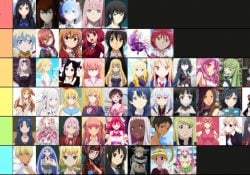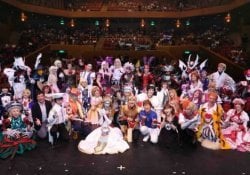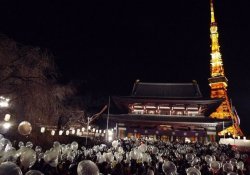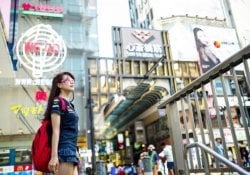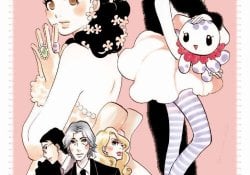Do you know what a geisha is? What is their history in Japan? Are they really prostitutes? In this article we made a complete guide to explain everything about geisha in a simple and practical way. Read below trivia, stories and many other information related to the geisha of Japan.
Geisha [芸者] are Japanese women who study the ancient tradition of art, dance, and singing. In Japan, being a geisha is a cultural, symbolic, and prestigious condition, full of delicacy and tradition.
the name itself geisha [芸者] can be literally translated as art (gei - 芸) and person" or "practitioner" (sha - 者), i.e. a artistGeishas can also be called Geiko (芸子, Geiko) or Geigi (芸妓, Geigi).
To facilitate navigation in this article, we have prepared a summary:
Índice de Conteúdo
What is a geisha? What they do?
They live in neighborhoods known as hanamachi [花街] which means city of flowers. His rooms are called okia where they feed, receive advice, kimono, obis and other special tools and treatments during her geisha contract called a nenki.
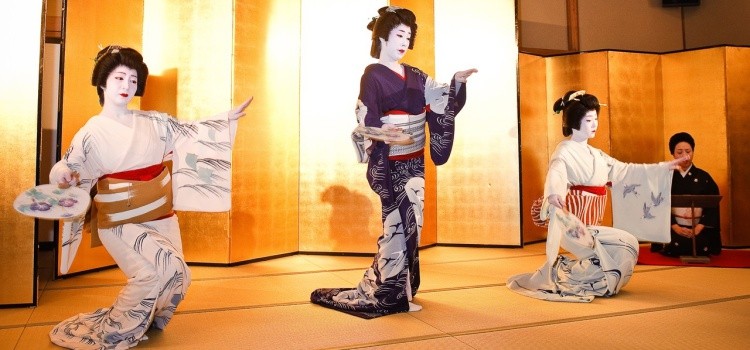
They work in places called Ochaya, which are tea houses where they offer entertainment consisting of conversations, games, traditional music, singing, and dancing. Geishas also often play the traditional instrument. shamisen, and also play other instruments such as flute, koto, ko-tsuzumi, and taiko.
In addition, they write poems, paint pictures and compose music. They learn conversation techniques and also games to entertain the guests. They also need to learn shodo calligraphy and tea ceremony. It is not necessary to be beautiful to become a geisha, just have these skills.
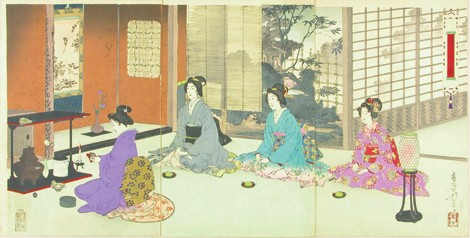
Geishas are also quite mysterious, they tried to be as anonymous as possible, using stage names that gave an air of mystery and fascinated customers even more. Everything about geishas is very elaborate and delicate, from their totally complex hairstyle, their kimono, and your white makeup.
It is believed that a geisha takes about 2 to 3 hours just to get ready. Currently, most of a geisha's clients are older or wealthy men who have great admiration for Japanese culture. They convey the idea of a perfect woman, and make their clients feel valued and attractive.
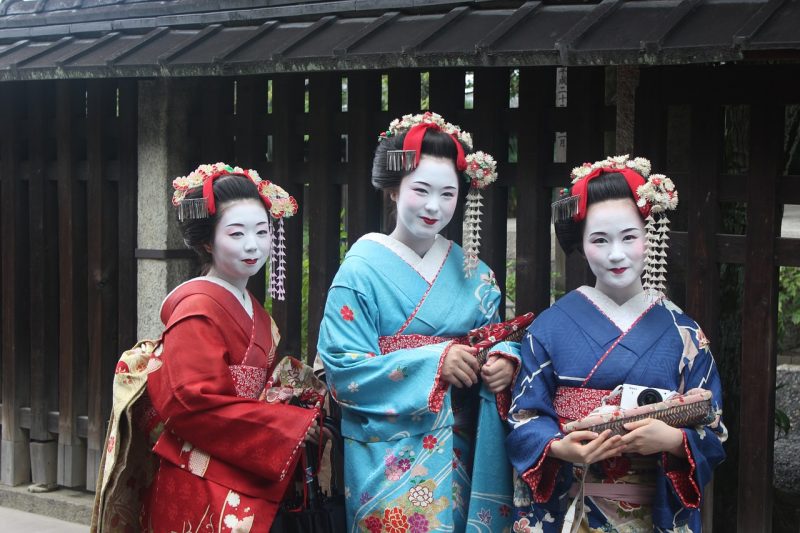
Are geishas prostitutes?
Many Westerners believe that Geishas are prostitutes, a completely erroneous idea. On the contrary, Geishas were created for entertainment without sex, they were forbidden to sell sex. Geisha clients sometimes fall in love and are deceived, but they must come to terms with the reality that they will never have a geisha in their arms.
The geishas were forbidden to have relationships, because at the time the prostitutes in Japan were licensed and known as Oiran (花魁) courtesans. Thus, the routine of the Geishas was completely supervised, they did not have the freedom to do as they pleased, as prostituting could interfere with the Oiran's business.
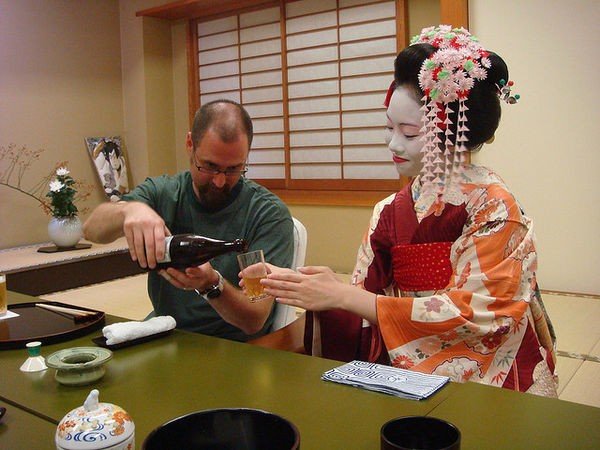
Some come to this conclusion, because in the early stages of Japan's history, there were artists called saburuko, many were without families, and ended up prostituting themselves or earning a living by entertaining the upper class at social gatherings.
Over time, a division arose between those who provided sexual favors and those who worked entertaining people with dance, arte, games, and music (geishas).
We do not blame Westerners for creating these confusions, both Geishas, Orians, Saburuko, and other classifications of girls who worked in the leisure districts used similar clothing and makeup. Another reason for this conclusion is that indeed, some women who became Geisha were formerly prostitutes.
To give you an idea, the first Geishas were actually men entertaining customers who were waiting for the courtesans, they were known as "Taikomochi" or "Houkan." Becoming a geisha was a way for girls to leave the world of prostitution and enter the world of entertainment.
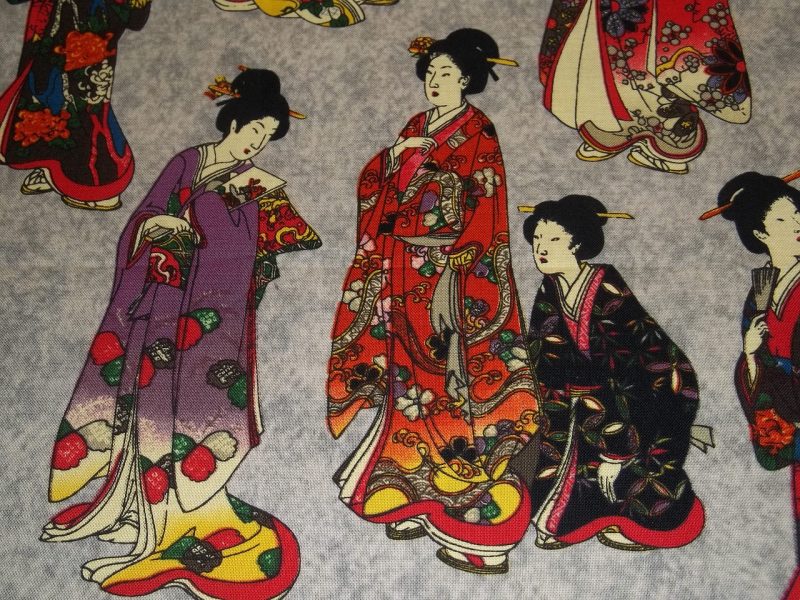
Geishas can't have relationships
Geisha were also not allowed to engage in serious relationships. If they decided to marry, for example, the geisha was forced to retire permanently from the profession.
We can compare the geisha with the current ones japanese idols, if there's a scandal of them going out or getting involved with someone, it could ruin their careers and affect the fans who are passionate about them, in the same way, geishas avoid both relationships and prostitution.
Despite all this, there was a practice in the ceremony called Mizuage, where a Maiko (Apprentice) becomes Geisha. In this ceremony, her virginity was auctioned and the money was used to promote her debut. Fortunately this practice became illegal in 1959.
Anyway, it is undeniable that in the past people sought these places for entertainment. So much so that they were known as "Blocks of Pleasure" (yuukaku - 游廓).
It was in these places that many things current in Japanese culture emerged, such as the Kabuki which is currently a theater performed by men, but which was formerly a sensual dance.
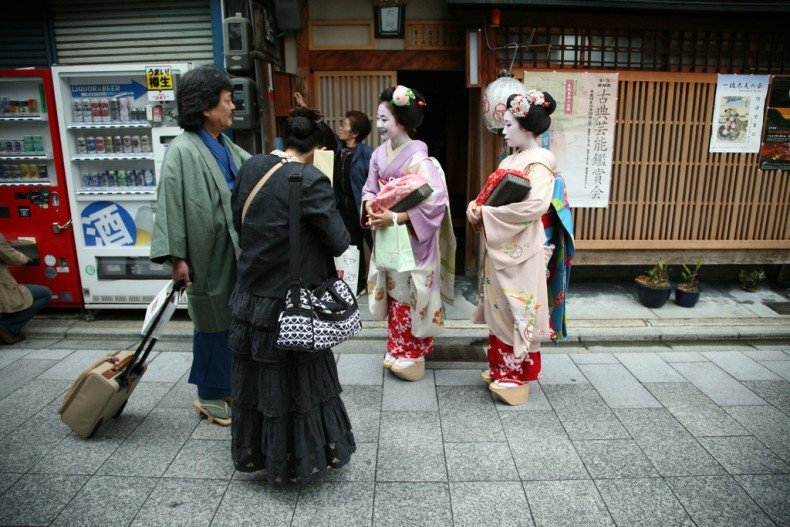
The article is still halfway through, but we recommend also reading:
What happened to the Geishas?
The Gueixas were quite popular in Japan, so much so that it even became a female occupation. They were known as elegant and high-class women. Being a geisha was honorable and glamorous, many of them started their training from a young age, around 3 to 5 years old, with the average being 9 years old.
The geisha greatly diminished around the second world war, because teahouses, bars and geisha houses were forced to close, and all employees were put to work in factories for the war. The country considered the training of geishas from childhood as child labor.
The name geisha also lost its meaning, as prostitutes started referring to themselves as geishas to American military personnel. After a while, geisha houses were allowed to be opened, but the few women who returned decided to reject Western influence and return to traditional forms of entertainment and life.
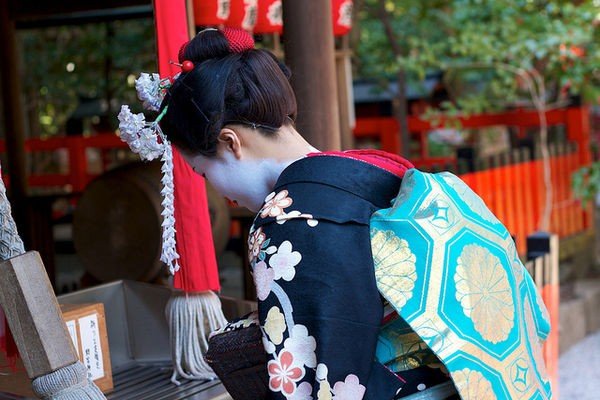
Currently there are few geisha in Japan compared to the old days, they can be found in the hanamachi geisha districts in cities like Kyoto.
Entering a teahouse or restaurant that currently has geishas is luxurious and very expensive, being a geisha is a very profitable profession, but complicated and demanding.
In 1920 there were about 80,000 geishas. In 1970 approximately 17,000. And nowadays, an estimated thousand traditional geishas.
Gion Matsuri - Geisha Festival
Gion Matsuri is one of Japan's most famous festivals, and also the longest - running throughout the month of July. This festival is held in Kyoto in the Gion geisha district. However, most of the main attractions of the festival do not take place in Gion alone. This is a festival full of attractions.
This festival originated as part of a purification ritual (goryo-e) to calm the gods and prevent fires, floods and earthquakes. This practice was repeated whenever an outbreak occurred. In 970, it was decreed as an annual event.
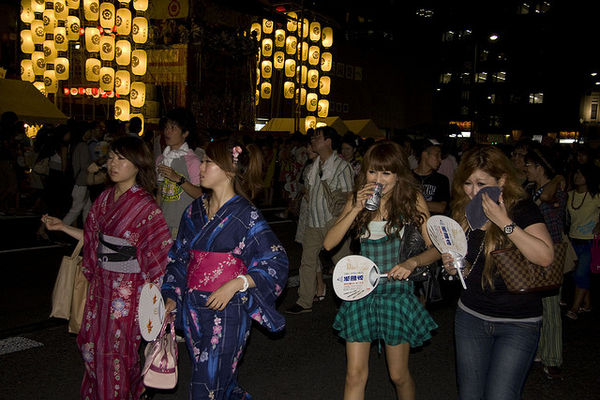
The Yamaboko Float
The peak of the festival are the Yamaboko parades on July 17th and July 24th. The streets of Gion are reserved for pedestrian traffic three days before. Vendors offer snacks and games on the streets, and many people attend these days wearing the traditional Yukata.
The floats at Yoiyama Parade are divided into two groups, Hoko and Yama, which are called Yamaboko (or Yamahoko). There are 9 of the large Hokos (with long sticks or halberds), which represent the 66 spears used in the original purification ritual, and 23 of the smaller Yamas, which carry life-size figures of important and famous people.
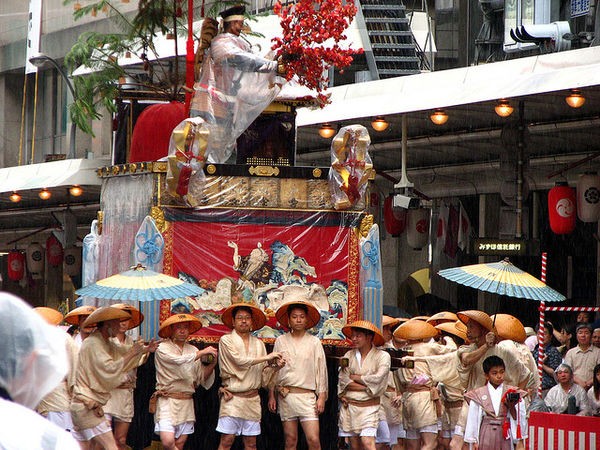
All the floats are decorated with beautiful tapestries from Nishijin (the best in all of Japan) or imported from various parts of the world. In addition to the artistic elements, there are many traditional musicians and artists on top of the cars.
the floats Hoko they are usually heavy and dangerous, reaching up to 12,000 kg and 25 meters in height. Its wheels are usually approximately 2 meters in diameter. Yama cars usually weigh a ton and a half, and are usually 6 meters tall.
The Gion Matsuri is perhaps the best event in Japan for geisha fans and photographers. You can find the most famous and traditional Geisha, Maiko, and Tayu.
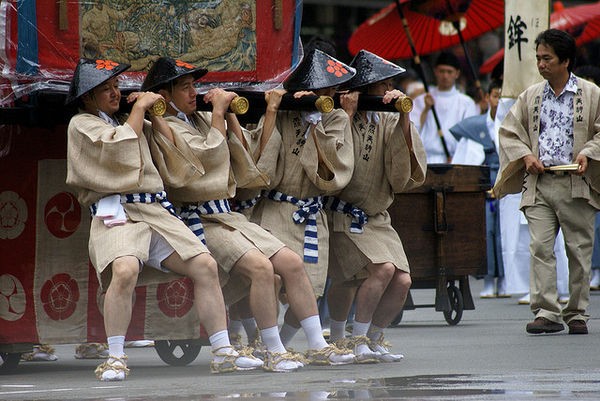
Hanamachi - Geisha Districts
Kyoto has several districts of geishas or hanamachi, known for their Ochaya tea houses. The atmosphere of the hanamachi takes you back to the Edo era; most of these districts are filled with restaurants and nightlife. Kyoto is a historical and traditional city, where you can find the best geisha hanamachi in all of Japan.
The word Hanamachi means City of Flowers what are the Gueixa districts, where are they located Ochaya, which are tea houses where Geishas offer entertainment that consists of conversations, games, traditional shows, musical performances, singing, and dancing.
Geishas live in a Thekiya a Pension that offers special treatment to the Geishas and they live there during the duration of their nenki (contract or career as a geisha). Now let's see the 4 biggest Hanamachi or Geisha Districts in the city of Kyoto:

Gion - Japan's largest geisha district
Gion is the largest and most exclusive geisha district in Japan. The Ochaya in Gion are the exclusive retreats of the wealthy individuals in Japan. It is also common for foreign dignitaries and important clients to be invited.
For the general public, the best place to see geisha and maiko is the streets of Gion. Many tourists walk the streets of Gion hoping to see one, but it's not easy. I didn't get a chance to see any myself, but the streets are beautiful for pictures.

There is also an annual evolution of Gion geisha called Miyako Odori (cherry blossom dance). It is performed every night in April at the historic Kaburenjo Theater. This attraction has been held annually since 1869.
Pontocho - The district on the kamogawa river
Pontocho is a street near the hanamachi of Gion, parallel to the river, formed by shops, tea houses and restaurants. All the architecture is original to the sec. XII and withstood destruction and modernization, remaining untouched to this day.
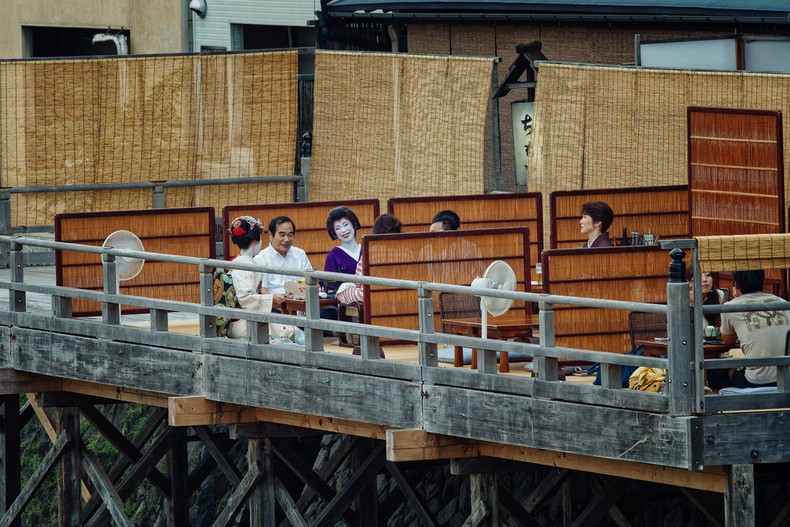
Pontocho is centered around a narrow stone corridor that extends for about six blocks. The area is packed with restaurants and a variety of neon signs lighting up the nightlife.
Most of the restaurants on the east side of the alley overlook the Kamogawa River. Some offer a dining platform over the river known as a kawayuka.
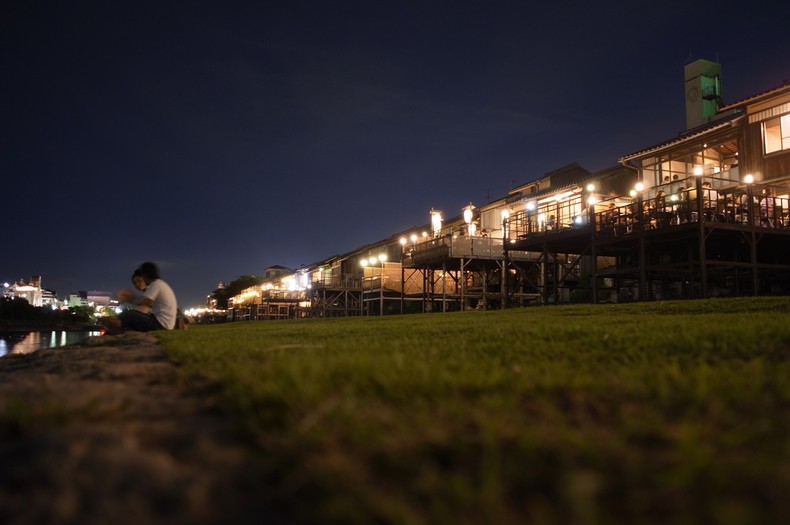
The “back” part of the street is on the banks of the Kamo River, and the restaurants' balconies create a very picturesque look. Your chance of encountering Geishas or Maiko in this region is quite high. A place to enjoy the river on the edge of a lawn that even play soccer.
Miyagawacho - Hanamichi with kabuki
Miyagawacho has a large entertainment area along the banks of the Kamo River. In addition to several Ochaya, you will find the famous Kabuki Minamiza theater in Miyagawacho which sometimes features Geisha performances.
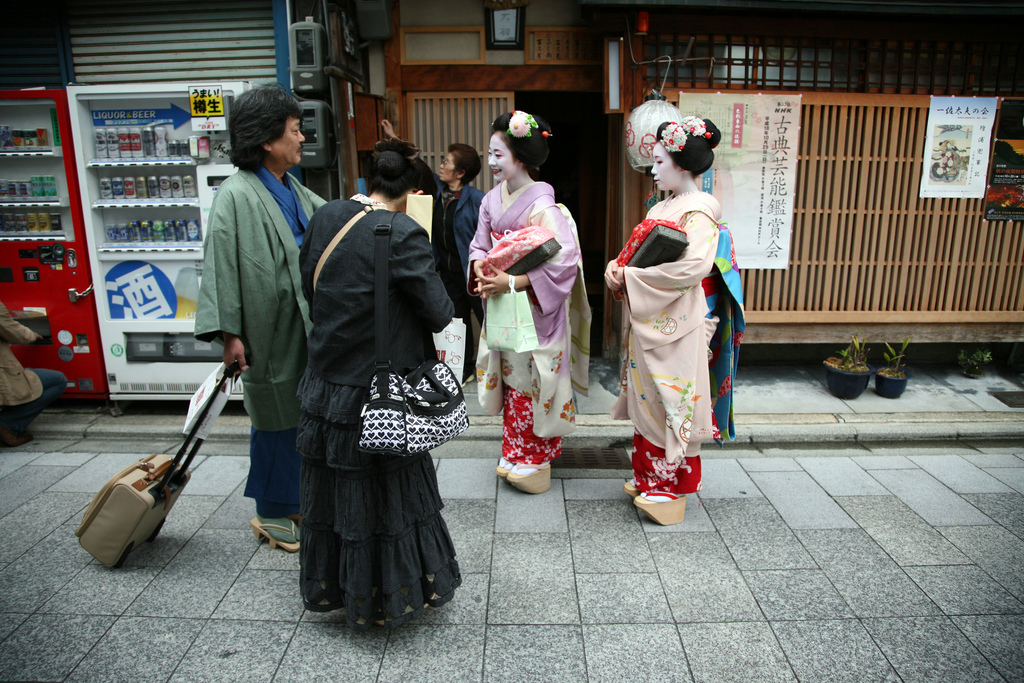
In this region there are several performances involving geishas and maiko, you can easily buy a ticket and watch a show. A very popular event is Miyako Odori, which only runs for a few weeks in April.
Miyagawacho was once home to many kabuki theaters that took place on the riverbank, there were even teahouses operating on riverboats.
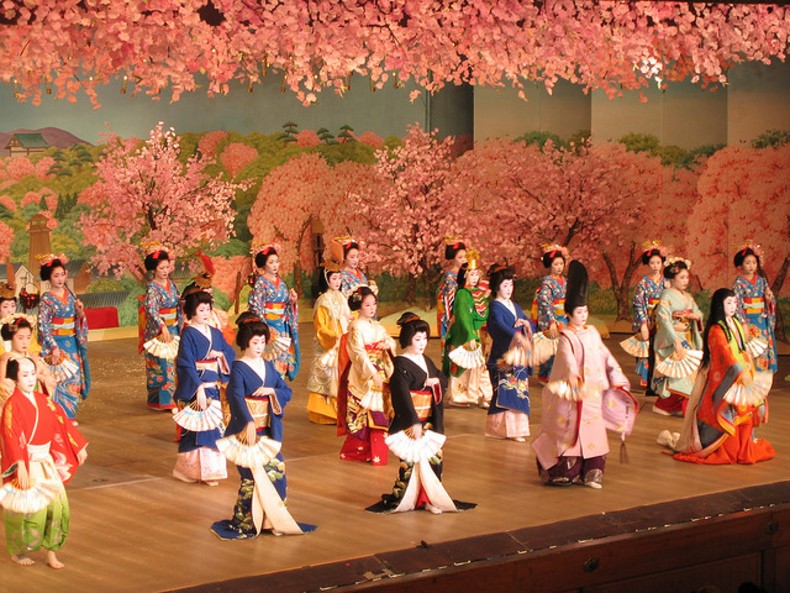
Kamishichiken - the music district
Kamishichiken [上七軒] literally means 7 upper houses and refers to the seven tea houses constructed from materials from the reconstruction of Kitano Shrine in the Muromachi Era (1333-1573).
In the neighborhood there are about 25 geisha and maiko who work in 10 Ochaya. The geishas in this district are known for their excellent music. Here you will find the Kamishichiken Kaburenjo theater and events like Kitano Odori.
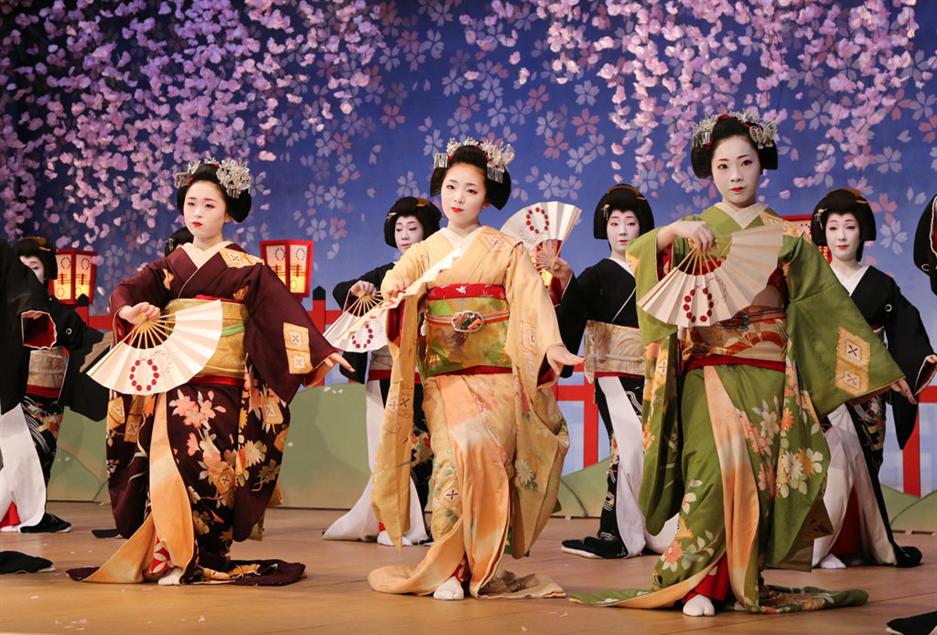
Kamishichiken is one of Kyoto's oldest Geisha neighborhoods. Unlike the other areas that are in the center of the city close to each other, this one is located further away, so it is quieter and has fewer tourists.
Classifications and Formations of Geishas
The children or daughters who were trained as geishas were known as hangyoku. At the time, it required a long training to become geisha and they went through the following stages:
- Shikomi - Means "servant";
- Minarai - Means "learning by watching";
- Hangyuku - Means half-jewel - they receive half a geisha's salary. (Maiko)
- Maiko - Final stage of training, means "the girl who dances";
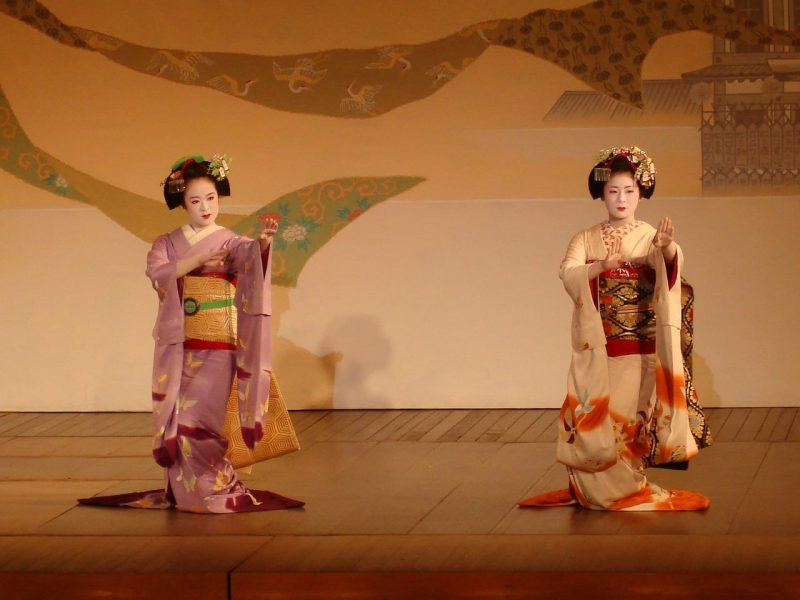
Currently, women can directly become geisha or maiko. A woman over 21 is too old to become a maiko, so she becomes a geisha right away.
Girls can become apprentices (Maiko) before they turn 18. They do and learn everything with their onee-san, an experienced geisha who serves as a tutor. Being a Maiko has its advantages and prestige, as they are at the height of femininity. After 5 years as a Maiko, or upon reaching a certain age, they become Geisha and make much more profit.
The geishas were allowed to have a danna, a wealthy man who covered the costs of their training. There was no exchange of sexual favors, but in some cases, a forbidden romance between the two could be happening.
If a geisha decides to get married, she would participate in a ceremony Hiki Iwai (separation celebration), So she stopped being a geisha and sometimes found a patron danna who supported her.
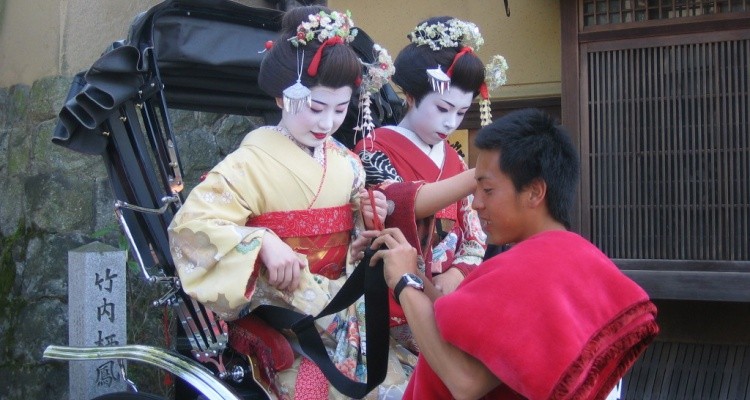
Differentiating Geisha from Maiko
To tell a geisha from a Maiko, just look at her collar. A Maiko often wears brightly colored kimonos and a red collar. While a Geisha usually wears muted colors and a white collar.
There are many details about geishas that have not been mentioned. There is too much information for just one article, so we will conclude here. We recommend that you also read other related articles.
Unfortunately, we know of few anime or stories that have geishas or maiko as protagonists, but we will try to mention a few below:
- Shouwa Genroku Rakugo Shinjuu;
- We also recommend the movie Memoirs of a Geisha.
Questions about Geishas
How do geisha sleep?
The apprentices spend hours doing the hairstyle and, in order not to mess it up, sleep on a wooden brick (geisha older women can wear a wig).

